 B2B customer experience misunderstandings run rampant across studies, articles, CX tech providers, and mainstream commentary. Many proclamations about B2B customer experience have a myopic perspective, focused on sales, service, marketing, digitalization or promoting an offering — without B2B roots or a clear view of B2B general management.
B2B customer experience misunderstandings run rampant across studies, articles, CX tech providers, and mainstream commentary. Many proclamations about B2B customer experience have a myopic perspective, focused on sales, service, marketing, digitalization or promoting an offering — without B2B roots or a clear view of B2B general management.
Fake-news about B2B customer experience revolves around lumping all types of B2B companies together, defining CX too narrowly, overlooking natural B2B strengths, and assuming CX management is limited to a set of techniques.
Before you accept a claim about B2B customer experience maturity, check the employment history of the speaker, the source’s vested interest, and these facts:
1) B2B company types vary widely
One size does not fit all! The range of B2B company types spans from menial to “rocket-science”-level service and product providers.
- Subcategories of producers and resellers include capital equipment, raw materials, original equipment manufacturing (OEM), maintenance-repair-operations (MRO), intermediaries, and services.
- A wide array of criticality, risk and price-level exist in each subcategory. For example, B2B services ranges across janitorial, utilities, research, monitoring, decision-making, financial, risk management, and so on.
- B2B customer organizations may be in any of the above categories, as well as government and institutions.
- B2B company sizes range from sole proprietor to boutique agency to small, medium, large and conglomerate. More than 99% of the 31 million U.S. businesses today are small, and among small businesses, more than half are B2B companies.1
- Additionally, B2B business models range from subscription or ongoing consumption to one-time purchases, sole supplier relationships, and capital expenditures.
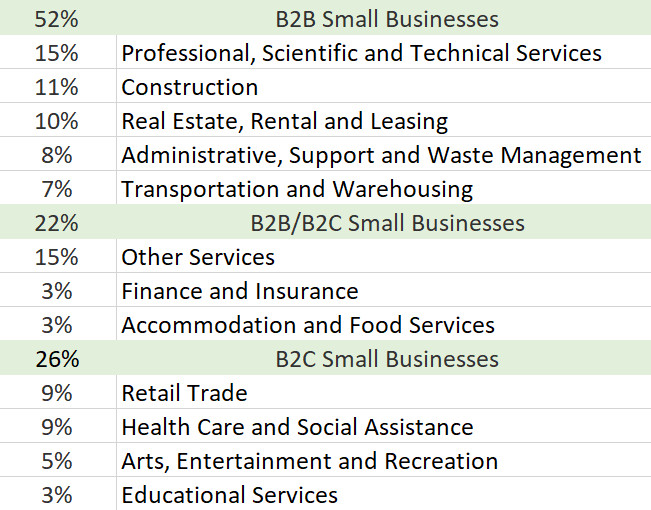
Like B2C with its various types of companies — brick-and-mortar, online, kiosk, customer’s premises; big-box, chains, mom-and-pop, trades services, professional services, etc. — B2B just can’t be lumped into one generic group.
Let’s start being specific about the type(s) of B2B firms involved. The vast diversity of B2B companies means B2B customer experience maturity claims are usually inaccurate.
Your opportunity for B2B customer experience maturity: learn from one another through B2B case studies and benchmarking. It’s best to benchmark other B2B industries on how business is run in the non-customer-facing groups as this is a key to embedding customer-centricity in your DNA fabric and leapfrogging your industry norms.
2) B2B customer experience goes well beyond purchase
Buyers are the tip of the iceberg! Buying is an experience, but it’s not the B2B customer experience.
- Marketing interactions and sales interactions may be experience nuggets, but they do not comprise the full B2B customer experience.
- The deployment, ongoing use, and/or effect of what’s purchased is typically far-reaching in time, people and business impact from the B2B customer’s perspective.
- Certainly, functionality of what’s purchased is paramount in meeting business requirements.
- Repercussions of poor purchase decisions may include career implications.
- Ongoing relationships between supplier and buyer are necessary for organically positive word-of-mouth.
Like B2C customer experience, the full customer life cycle must be recognized as the end-to-end B2B customer journey.
Let’s stop labeling the B2B marketing or B2B sales or the B2B buying process as the B2B customer experience. While it’s a vital phase, it’s just one part of a potentially long-term relationship among numerous players in each company.
Your opportunity for B2B customer experience maturity: capture customer intelligence from the buying phase and all other customer touch-points and share them in a quick-to-digest format on a regular basis with all of your non-customer-facing groups. Customize this intelligence to each recipient group and give them some hand-holding when they have an internal routine where they can weave this information into their reporting and decision-making.
3) B2B purchasing is a team sport
It takes a village! Many parties within a B2B firm influence buying decisions.
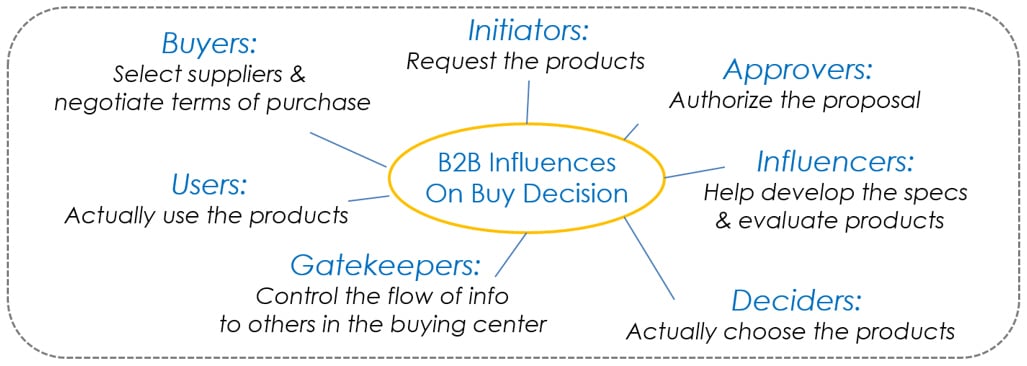
- Purchasing agents or end-users are just one of many parties within a business who is impacted or has a voice in the purchase decision. For example, safety, quality, legal and other groups may specify standards and require their signature approval for many types of purchases.
- The many parties involved in B2B buying and repurchase decisions requires a concerted effort to keep a pulse on each party’s moments of truth (junctures for increasing/decreasing engagement).
Unlike B2C with individuals making unilateral purchases, B2B buying is a team sport. Even so, customer experience tends to go well beyond purchase for both B2C and B2B.
Let’s keep a pulse on each B2B internal influencer’s interests and perceptions. B2B voice-of-customer must right-size and right-time the VoC experience for each type of internal influencer, with the right weighting in VoC reports.
Your opportunity for B2B customer experience maturity: make it possible for customers to give you feedback anytime, anywhere, any way they like. We have the technology today to glean verbal, written, and video feedback. You can use this almost-free VoC as your customer intelligence foundation that’s shared with each general manager. This way you can save a LOT of money and generate MUCH more value by tailoring your company-initiated VoC to build upon what you’ve already learned from customer-initiated VoC.
4) B2B account teams contribute a lot to customer experience management
No assembly required! Dedicated account teams (e.g. key account, account-based or objective-based marketing/sales) typically represent a significant percentage of built-in customer experience management.
- Deep and broad customer information is collected and championed by dedicated B2B account teams.
- Customer success teams manage a great deal of the post-sale B2B customer experience under subscription business models.
- This concerted B2B customer advocacy eliminates or reduces the need for contact centers in some B2B industries.
- Many aspects of customer management that must be handled separately in B2C are actually built-in in B2B.
Unlike B2C with individuals and households and relatively small sales prices, B2B companies typically have far fewer customers to manage at much large sales prices. This has led to high TLC (tender loving care) in B2B that should be assessed in studies and assumptive claims.
Let’s give credit where credit’s due in B2B companies. Just because a certain CX management technique may not be in use to the degree that it is in B2C companies does not mean customers are being slighted.
Your opportunity for B2B customer experience maturity: account teams are typically territorial regarding who gets access to their customers and customer intelligence. This is side-swiping your company’s ability to help you build trust. Your internal stakeholders company-wide need to know more about what your customers expect and what the gap is between that and what they get. Only then can your internal stakeholders help you close that gap to build trust, which will shorten sales cycles and expand referrals and share-of-budget.
6) B2B customer service and customer success are over-emphasized
Don’t let the tail wag the dog! The origin of most customer issues is non-customer-facing groups in both B2B and B2C companies.
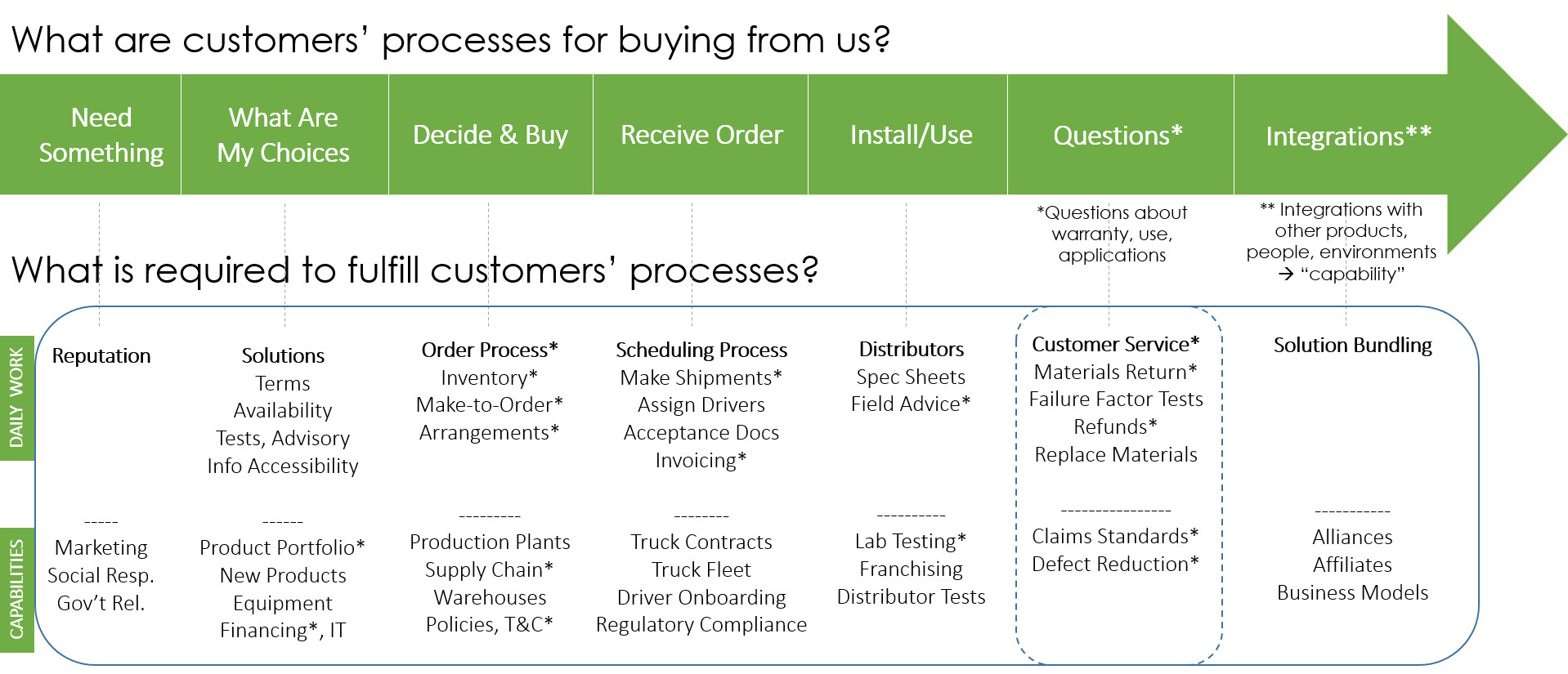
- When engineering, manufacturing/operations, and support functions get it right the first time, you save extensively in risks, costs, time, goodwill, personnel turnover, reputation, etc.
- By preventing recurrence of issues for your whole customer base, you can re-allocate those otherwise infinitely dedicated fingers-in-the-dike investments to higher-value opportunities. This is what I call CX annuities.
Like B2C preferences among customers, nobody really wants to have to speak with your service and success people — they’d prefer to just get what they expected in the first place and go about their lives/business trouble-free.
Let’s stop calling service and success “customer experience management”. Certainly, they’re vital to strong relationships, but there’s an even bigger responsibility among non-customer-facing groups for B2B customer experience excellence.
Your opportunity for B2B customer experience maturity: don’t be timid about expecting all your general managers and support functions to prevent the recurrence of customers’ thorny issues. Build-in pre-strategic planning workshops with cross-functional collaboration toward resolving root causes. Build your roadmap for everyone’s ability to anticipate customers’ reactions so issues will be prevented.
7) Both B2C and B2B industries fall short in customer experience excellence
It’s a moving target! Numerous studies show modest improvement or static performance relative to customers’ ever-growing expectations for both B2C and B2B firms.
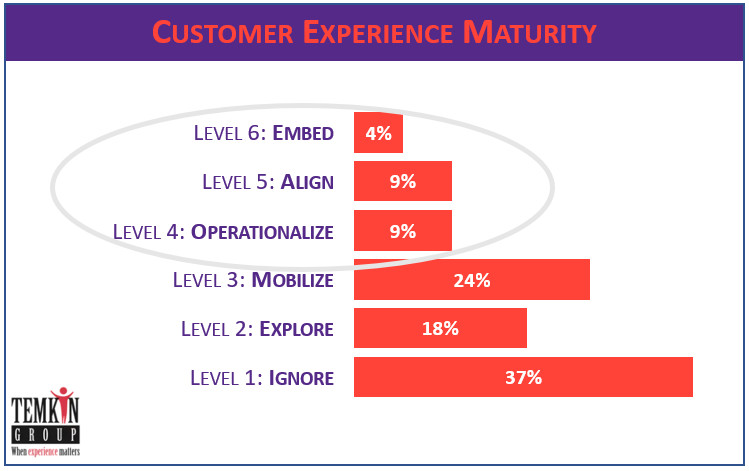
- Even the most-admired brands can have ups-and-downs in customer experience performance.
- The line for customers’ expectations is blurring between B2C and B2B suppliers.
- The pace of change in both B2C and B2B customers’ situations, angst, and table stakes is faster than ever with the global pandemic.
While the best-known examples of good customer experience are touted by B2C firms, there are probably a similar number of B2B firms that do as well without blowing their horn. Examples may include Old Dominion Freight Line, Boeing in earlier times, SunTrust, Adobe, TELUS, to name a few, along with many regional and local B2B companies.
Let’s be frank about CX realities universally, and also start giving a bullhorn to B2B customers to praise their favorite suppliers. Media, researchers, conference organizers, academics, and so on should take initiative to give the spotlight to B2B customer experience winners.
Your opportunity for B2B customer experience maturity: recognize good end-to-end customer experience as the hand that feeds you — and your investors. Reframe your business objectives within the context of “why customers care”, what you’re doing to be there for customers’ well-being, and how customers’ well-being is a precursor to your growth.
8) B2B customer experience maturity is not about specific CXM techniques
Maturity is aligned outcomes! Did you have a fabulous time when you went to Disneyland? How much did that entail voice-of-customer, digital marketing, predictive analytics, journey mapping, loyalty programs, CRM, and so forth? Likely, your fabulous time meant an absence of all of the above in what you experienced. Rather, this list of things was behind-the-scenes as a well-oiled machine.
- It’s not the number of listening posts you have — but rather the degree to which voice-of-customer is used to refine processes, policies, business models, attitudes and strategy — that defines CX maturity.
- It’s not the number of journey maps — but rather the cross-functional teamwork in understanding and resolving root causes of poor customer experiences — that defines CX maturity.
- Customers don’t care what methods you use. They just want outcomes that match what’s expected.
Like B2C, maturity is not about specific CXM techniques — it’s about gaining an intimate knowledge of your core-growth customers’ expectations, aligning all functional areas’ performance to these expectations, and anticipating outcomes your customers will love.
Let’s stop comparing whether B2B is using certain CXM methods to the same extent as B2C is doing. It really doesn’t matter. What does matter is how well the gap is closed between customers’ expectations and their actual experiences.
Your opportunity for B2B customer experience maturity: customer outcomes may be well researched already by your R&D group, your sales team, and/or your customer success department. Otherwise, you can ask customers what outcomes they’re pursuing as a result of their consumption of your products/services. When your senior leadership team can be crystal-clear in describing these outcomes, your company is more likely to consistently deliver them. There may be dozens of ways to achieve that, and which methods are best should be determined case-by-case according to what makes the most sense for your customers, and then by what works best for your managers.
9) Engagement and NPS® do not equal B2B CX maturity
Ease of business is the key! Organic growth is the ultimate goal of customer experience performance: do your customers want to buy more and influence others to buy from you, without incentives and enticements?
- Organic demand is the result of experiences matching expectations.
- Engagement and NPS® are outcomes of organic demand, but they are most often increased through incentives and enticements rather than closing the experience vs. expectations gap.
- Bottom-line growth (earnings per share) must parallel top-line growth (revenue gains) for sustained success. Otherwise, you’re on a hamster wheel or becoming unviable.

Let’s stop seeking instant gratification from customer experience management. It’s exhausting for everyone and for your resources.
Your opportunity for B2B customer experience maturity: re-define customer experience management roles as facilitators of company-wide adoption and accountability for CX performance. This is the only way you’ll see the massive growth promised by customer experience management.
10) Trust-building is a huge 2021 need among B2B and B2C firms
CEOs lead trust-building! “‘The CEO of my employer’ has joined the ranks of scientists and community peers as the handful of societal leaders trusted to do what is right”, according to the 2021 Edelman Trust Barometer2.
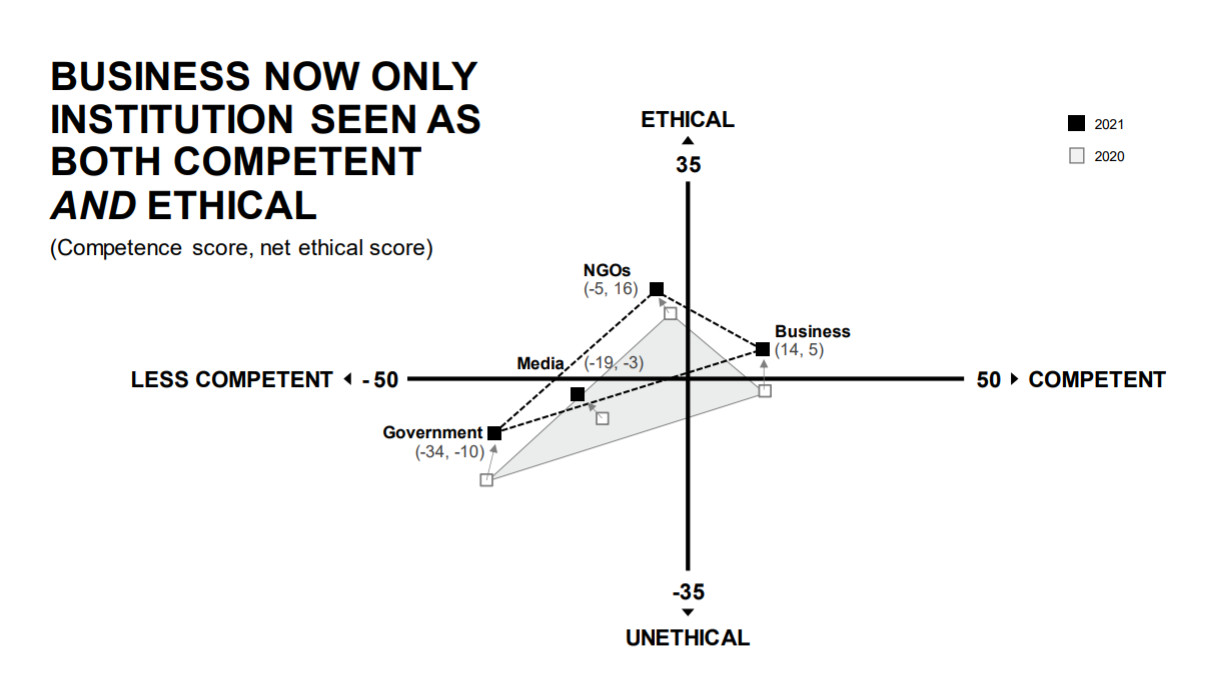
- Businesses are the most competent and ethical spokespersons today, compared to media, government and non-government organizations (non-profit firms).2
- Currently, people trust their employer’s communications above media, government, and social media.2
- Trust relies on balanced attention among your 5 vital stakeholders: customers, employees, suppliers, communities and shareholders.3
- Audit your policies, processes and incentives on a regular basis:4
- What behaviors might be interpreted as selfish?
- What comes across as disrespecting customers’ hard-earned money (unfair margins, extravagant perks, disrespect of the community or environment, etc.)?
- What are managers’ and employees’ perceived entitlements? Why?
- Do actions match words?
- What exceptions exist, and what message does that send?
- What behaviors might be interpreted as selfish?
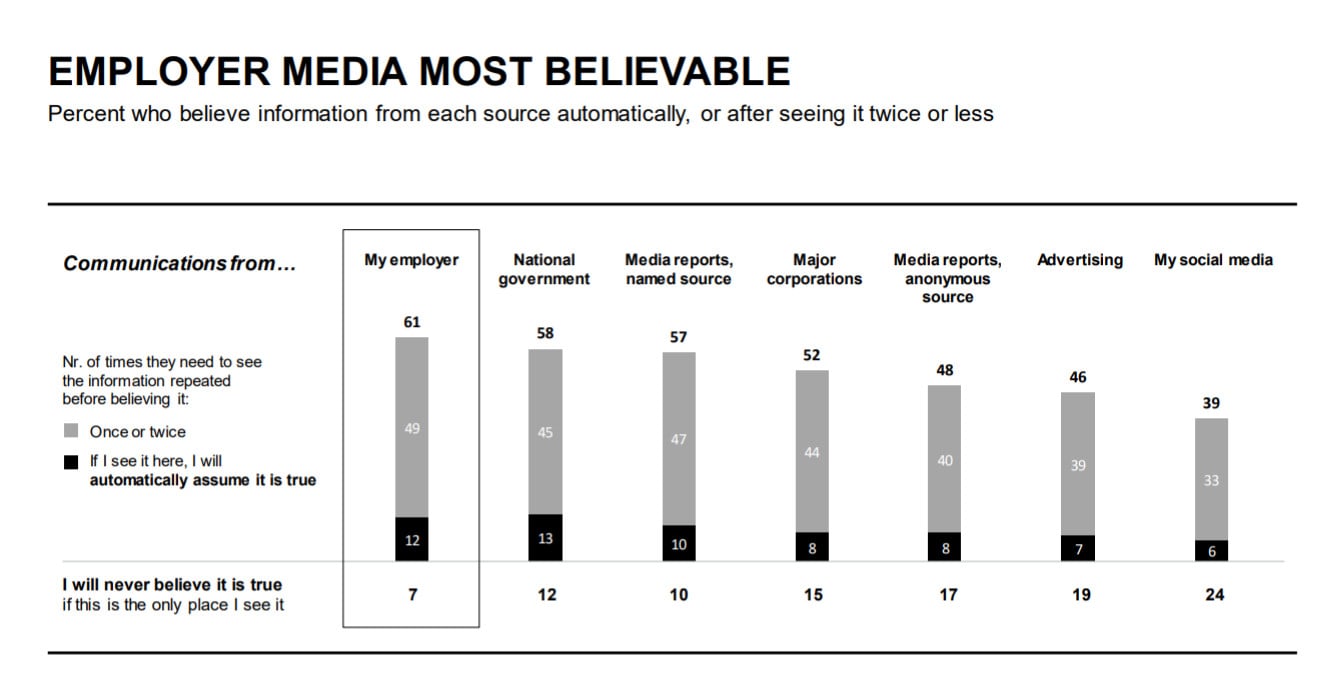
B2B and B2C CEOs have an extraordinary call-to-action now to restore trust in our society, worldwide.
Let’s start emphasizing mutual trust as the basis of good customer experience and strong customer relationships. Instead of managing to the lowest common denominator, let’s expand empathy and confidence in all areas of our businesses.
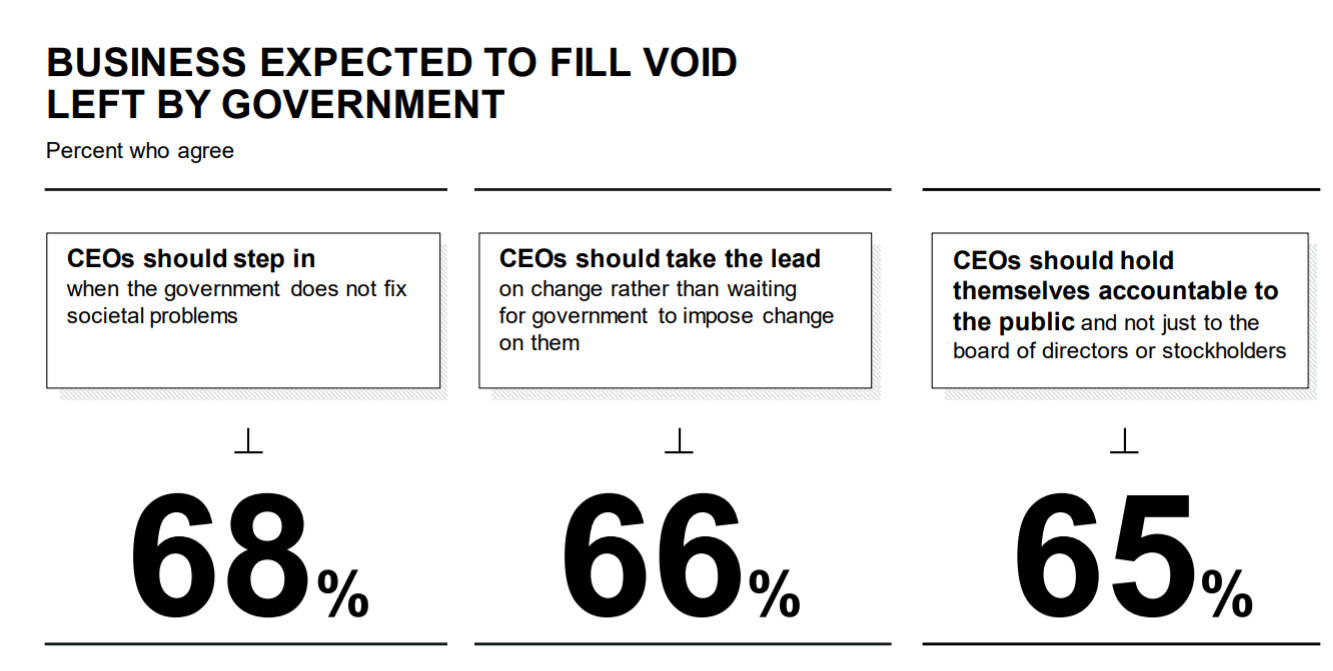
Your opportunity for B2B customer experience maturity: internal trust levels are reflected externally, so business leaders and CX managers should nurture both employee experience excellence and internal customer experience strength. This extends to purchasing managers demonstrating greater trust and partnership with suppliers. It’s not possible to be uncaring on one end (suppliers) and to expect others (customers) to care on the other end. What goes around comes around.
In my 5-year study of global B2B customer experience practices it became apparent that the gulf between B2C and B2B customer experience maturity is much smaller than others would have you believe. However, there are distinctive challenges faced in B2B that aren’t inherent in B2C and vice versa. Comparisons must acknowledge these unique characteristics; most comparisons to-date are apples to oranges, diluted, naive, and/or self-serving.
For B2B customer experience-led growth, respect the natural strengths of B2B management and shore-up the missed opportunities. You can lead your industry in customer experience performance. My hope is that you’ll be a change agent for B2B customers’ well-being by leapfrogging norms. It’s good for economic growth, society’s stress, and your prosperity.
References:
1https://smallbiztrends.com/small-business-statistics
2https://www.edelman.com/trust/2021-trust-barometer
3https://customerthink.com/ceos-guide-to-growth-through-customer-centered-capability/
4https://clearaction.com/customer-experience-policies-empower-growth/
Image licensed to ClearAction Continuum by Shutterstock.



